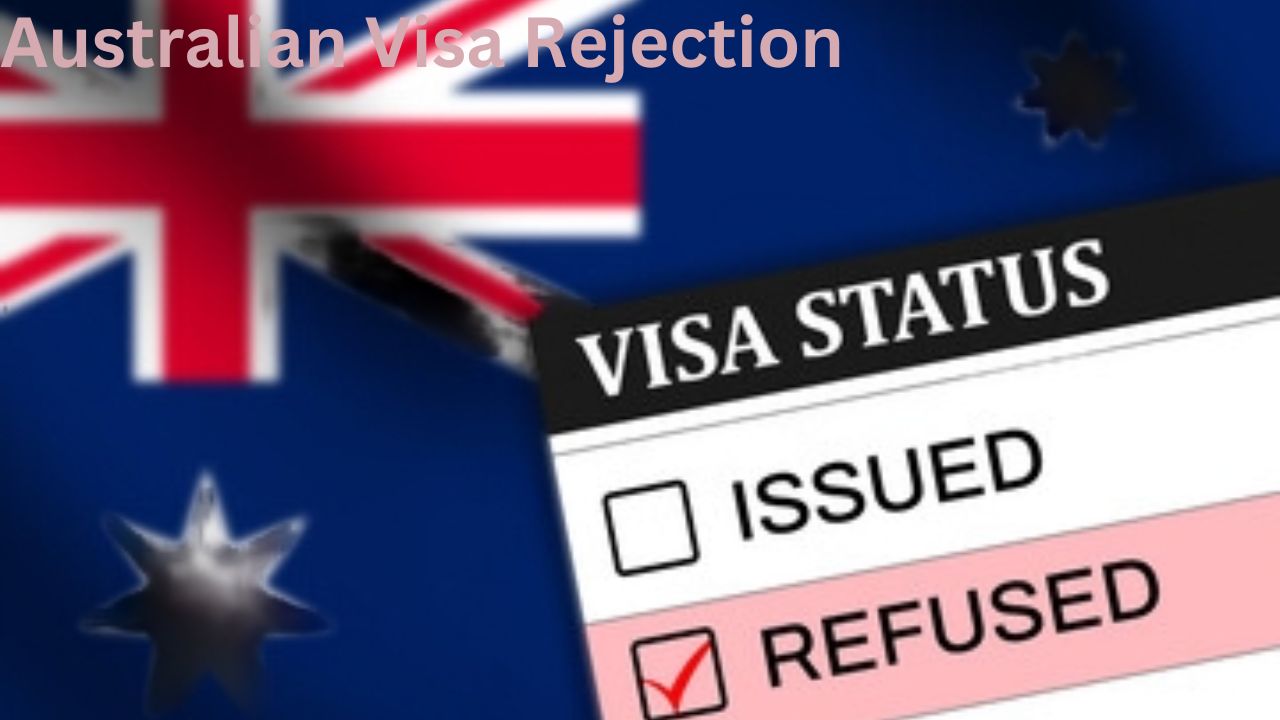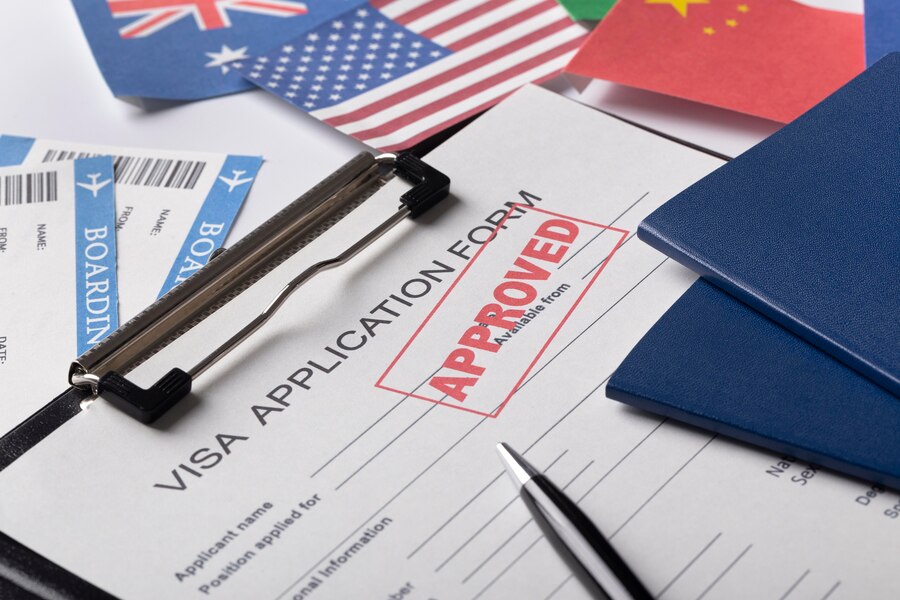Australia is known for its beautiful scenery and diverse wildlife. People all over the world travel to Australia for jobs, study, or tourism. However, for the unlucky ones, their dreams of traveling to Australia may end when their visa applications are refused. In this blog, we will discuss some of the major causes of Australian visa rejection.
Obtaining a visa to Australia from countries like Nigeria can sometimes be frustrating even after good application planning. So, this article will guide visa applicants on what to do to avoid a visa rejection from the Australian embassy.
Common Types of Australian Visas
1. Tourist Visa (Subclass 600)
The Tourist Visa (Subclass 600) enables individuals to travel to Australia for tourism, business activities. This visa allows stays of up to 12 months and multiple entries.
To apply for this visa category, applicants must prove that they have enough money to live in the country and a desire to return to their home country. This visa also supports short-term study or training for up to three months.
2. Student Visa (Subclass 500)
The Student Visa (Subclass 500) is for international students who are registered for a full-time course in Australia.
With this visa, applicants can:
- Participate in an eligible course of study in Australia.
- Travel in and out of Australia
- Work up to 48 hours a fortnight when your course of study or training is in session.
- You must:
- Apply online, in or outside Australia.
- Be enrolled in a course of study in Australia.
- Hold Overseas Student Health Cover (OSHC) or fall in one of the exemption categories.
The dependents of the students can be included as well. In addition to healthcare insurance and having English language proficiency, successful applicants can stay for up to 5 years.
3. Skilled Worker Visas (e.g., Subclass 189, 190)
Skilled Worker Visas, such as the Subclass 189 (Skilled Independent) and the Subclass 190 (Skilled Nominated), are in place to invite skilled workers to live and work in Australia.
One of the main differences between Subclass 189 and Subclass 190 visas is that Subclass 190 requires a nomination from an Australian state or territory, while Subclass 189 does not.
A migrant can apply for either a visa that leads to permanent residency or a visa that allows the migrant to reside, work, and study anywhere in Australia. Applicants must have in-demand skills, meet the points test requirements, and demonstrate competency in English.
4. Partner Visas (Subclass 820, 801)
Partner Visa, Subclass 820 (temporary), etc. are particular arrangements for wives or de facto spouses of Australian citizens, permanent residents, or acceptable citizens. Subclass 820 is temporary, while Subclass 801 is permanent.
The truth that those candidates must present shows the need for visiting. Such visas allow the partner to live, work, and study in Australia and access Medicare. The visa holder will be able to apply for permanent residence after a certain period has passed.
5. Temporary Work Visas (e.g., Subclass 482)
TSS, or Temporary Skilled Shortage Visa (Subclass 482), is a visa that lets Australian employers fill labor shortages by sponsoring skilled workers from abroad.
Under this visa classification, you will be able to seek employment in Australia for up to two years (and up to four years of employment if there is an ITO in place). Holders of Hong Kong passports may overstay up to 5 years.
General Reasons for Australian Visa Rejection
a) Incomplete or incorrect application
An application can be rejected if it is not properly filled out or if it contains false data. For instance, you may notice mistakes, which include omitted sentences, typos, or incorrect personal details provided.
It is important to ensure that all sections are completed fully and correctly so that they are not rejected. Ensuring the information provided is correct and using application checklists can help avoid the risk of making mistakes.
b) Missing Documents
Not having all the necessary documents is one of the most common causes of the Australian visa rejection. The required documents, however, differ among the visa types, and one may need to submit identification, financial statements, employment letter, and medicals. Completing the documents correctly and in full is a fundamental need that needs to be taken into account.
c) Inconsistent Information
Altering your information on documents such as birth certificate, international passport, National identity card, educational documents, etc., can lead to application rejection. So, applicants must double-check all the information before submitting.
Specific reasons for rejecting visas (Visa Types)
i. Tourist Visa
a) Insufficient Funds: Candidates will have to show that they have enough funds to live on while in Australia. Bank statements and financial records are needed as evidence.
b) Lack of Ties to Home Country: Demonstration of a strong community link to one’s home country, which could be employment, property, or family, is required to prove one will return.
c) Previous Visa Violations: Visa applicants may be turned down if they have previously overstayed or worked without permission, for example.
ii. Student Visa
a) Lack of Genuine Intention to Study: To apply for a study visa in Australia, visa applicants must present a clear career plan, and Australia is one of the preferred destinations because it has a specific program and institution.
b) In addition, they will provide proof of funds that will cover the tuition fee, living costs, and others. Among these documents to present are bank statements, admission letters from a recognized school in Australia, scholarships, or letters of sponsorship.
iii) Skilled Worker Visas
Inadequate work experience or qualifications. An inapplicable occupation code that doesn’t relate to the person who applied will be denied as well. If you fail to use the correct skilled worker visa, the visa application will be rejected.
iv) Partner Visas
Insufficient evidence of a relationship. The embassy can deny a partner visa if there is insufficient proof that shows that the marriage or relationship is genuine.
When applying for a partner visa (spousal), applicants are to include wedding pictures and family pictures with kids (if any). However, if there is any doubt that the marriage or relationship is not genuine, the application can be denied.
v) Temporary Work Visas
Employer Not Meeting Sponsorship Requirements: The sponsoring employer should comply with a set of requirements, such as being an endorsed sponsor and proving that the position needs to be filled.
In addition, the job offer needs to be from an occupation on the relevant skilled occupation list and must meet the visa subclass criteria.
Australian Visa Rejection: How You Can Avoid Them
1. Ensure correct and perfectly filled-out applications
Double-Check All Information: Carefully go through your application for there to be no errors or omissions in it. Make sure that the personal details, dates, and information provided are accurate and consistent.
2. Follow the application guidelines
Follow the specific instructions for the visa type that you are applying for. Use checklists issued by the Department of Home Affairs to make sure nothing is left out.
3. Provide supporting documents
Gather and submit all the relevant supporting documents, including land properties, bank statement of account, employment letter, business registration certificates, marriage certificate (If married) and so on.
Have sufficient funds.
4. Proof of Funds
Make sure you have enough money in your bank account (corporate of savings account) that proves that you can support yourself financially during your stay in Australia. In doing so, you must submit your bank statements, pay slips, and sponsor letters (if required).
The appeals process for Australian Visa Rejection

If you blame AAT for the unfair rejection, you can still appeal the decision. The Immigration and Refugee Board is an independent tribunal that examines decisions made by government departments, such as visa denials. Steps to take:
- Apply to the Administrative Appeals Tribunal (AAT)
If your visa application has been refused, you have to appeal to the Administrative Appeals Tribunal (AAT). Either you can apply online at the official website of AAT or you can send a paper application; the first option would be easier to review. If there is an instance where you are a sponsor or nominee, they may fill out the application for you.
The time for an appeal is very limited, and you have to send the written request within 28 days after the decision notice
If you miss the deadline, unfortunately, neither the Immigration Office nor AAT have the authority to extend the time limit. If you are in immigration detention, you have only 7 days to submit your appeal.
It’s important to remember that the appeal time will vary depending on why your visa was rejected and what type of visa you applied for.
The Immigration Office will send a written decision regarding your visa, and within the notice, you will have all the information regarding the deadline for appeals and how to appeal a visa refusal.
- Pay the Appeal Fee
Most applications require you to pay an additional fee to review the request, which is around AUD1,826. You may be eligible for a reduced fee of up to 50% if paying the full fee will cause you extreme financial difficulty.
You have to pay the fee before the deadline for sending an appeal request ends. If you are applying in person, make sure you do so before the timeline ends and pay the fee the same day when you lodge your application.
The payment can be made through credit cards, checks, money orders, and an electronic funds transfer at the point of sale (EFTPOS).
Read also: Easiest Countries To Get A Work Visa: How To Start The Process
Conclusion
Some factors can lead to make the Australian embassy reject your visa application. So, applicants must know the exact requirements of the visa that they are applying for and also provide all the information that can support their application.
In addition, applicants should be honest and transparent in their application, because false information is grounds for immediate disqualification. Having information about Australian visa refusals can give applicants a great chance to prepare well.







Pingback:
Pingback:
Pingback: